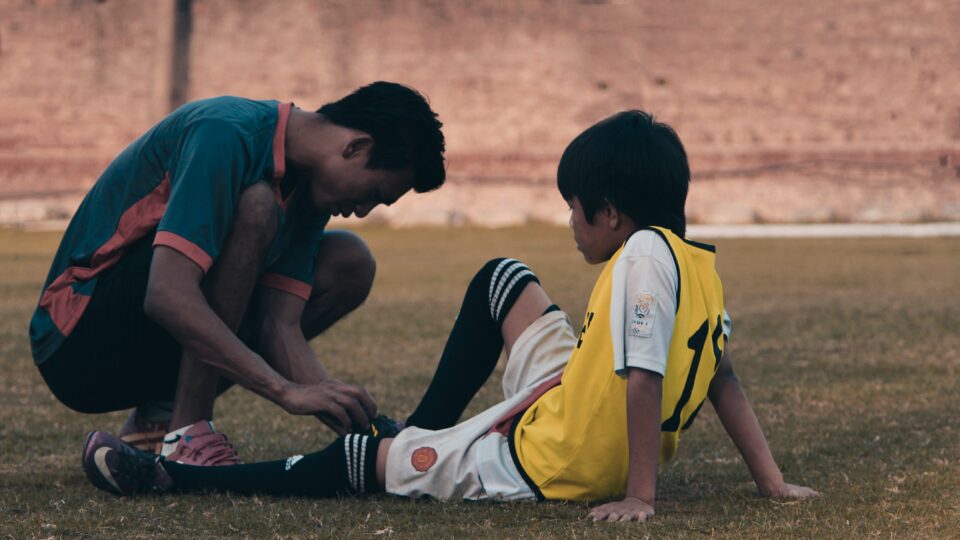What Do Reaching & Teaching “Member Care” Teams Do?

Member Care & Athletic Trainers
I watch a lot of sports. I also enjoy using sports analogies wherever I can, so please bear with me if you’re not much of a fan.
The way we approach supporting and caring for our missionaries around the world reminds me of critical personnel on every athletic team. At Reaching & Teaching, every missionary directly reports to a Regional Leader – we have 3 of them, each of them responsible for a different geographic area in the world. Our Regional Leaders are our coaches. They hold teams accountable for the strategy that they’ve been sent to implement – a strategy authorized by the churches that send them.
Every respectable athletic team also retains a training staff. Training staff have two main goals. First – they assist athletes in preventing injuries. Second – they help athletes who are recovering from injuries. Our member care team are Reaching & Teaching’s “athletic trainers” – focusing on the preventative and restorative health needs of our team.
Just like trainers ensure that athletes are exercising to build up endurance and strength, our member care team works to ensure that our missionaries are attending to their personal and corporate spiritual disciplines. I’ve seen our member care team recommend a number of resources to assist our missionaries in strengthening these areas of their lives. But injuries happen – and that’s when trainers work hard to help athletes get back to peak health. Some times it’s an injury that needs rest, ice, compression, or some more exercise. Other times, there’s a more significant injury – and an expert needs to be called in to perform surgery and guide the athlete back to health. Our member care team work hard to ensure our missionaries can recover when there are spiritual health issues – and where necessary, call in subject matter experts to deal with specific issues that require a particular expertise.
Church-centric Member Care
If you’ve interacted with our organization at any level, you’ve most likely recognized our desire to be church-centric in all that we do. You may also be asking where the church fits in all of this. That is a good and important question. The church fits in all of this.
First of all, our missionaries are commissioned by sending churches to achieve a specific objective overseas. We serve those sending churches by ensuring that missionaries are staying true to the task. We serve our missionaries by holding them accountable to that objective and by providing specific resources to help them meet their goals. We also serve those sending churches by helping them to care for their missionaries. We have no desire to replace the sending church in anything we do. We seek to compliment it.
Second of all, our missionaries recognize the biblical priority of joining other believers in local churches around the world. Where a local church doesn’t exist or can’t be joined (for various theological reasons), our missionaries work to see one established. We cannot neglect the importance of the missionary’s local church, in the field, in the care of the missionary. While sending churches, and organizations such as RTIM, can do some things from a distance, we cannot replace the vibrant community that a missionary covenants with overseas. If there are elders in a local church on the field, that are regularly interacting with our missionaries (and their church members), we cannot ignore their unique role and close proximity. These local churches are at various stages of health. Some have just been planted, some are being revitalized, and some are very healthy and provide a great hub for missionary activity in the community. Our team monitors the ability of each local church to provide congregational care to our missionaries throughout their overseas assignments.
Critical Communication
So we have a sending church, an agency, and most often, a local church. Three different entities co-operating in the care of RTIM-appointed missionaries around the world. 50 different missionary units with different sending churches and different local churches, each with a particular set of strengths and weaknesses. This requires our member care personnel to not only be communicating with sending churches, but also local churches – where possible and when necessary – to ensure that there aren’t gaps in the care of a missionary in the field. Some sending churches have sent a number of missionaries in the past and others are sending their very first missionary to the field. Some churches have the budget available to visit missionaries in the field, while others only have the resources available to contribute to the financial needs of the missionary. Some churches have great internal biblical counseling capabilities in their staff and membership. Others don’t.
The bottom line is that each missionary’s situation is unique for a number of different reasons. Different sending churches. Different local churches in the field. Different goals and different struggles. These differences highlight the need for clear and constant communication in the care of the missionaries that we support.
Reaching & Teaching supports an incredible team of missionaries all around the world. It’s a privilege and a task that we take seriously.
Want More Content Like This?
We will deliver Reaching & Teaching articles and podcast episodes automatically to your inbox. It's a great way to stay on top of the latest news and resources for international missions and pastoral training.
